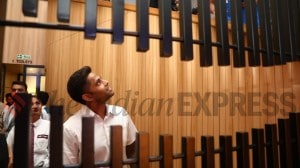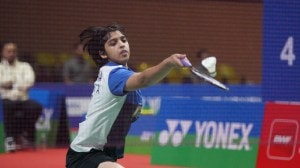When the spirit is willing, but the flesh is weak
Experts feel it is a matter of physique at the senior level where the difference exists between us and them

India making a mark in the world of soccer may yet remain a distant dream, but the Under-16 boys’ feat of qualifying for the AFC Cup finals shows a glimmer of hope. Whether they can sustain it beyond the age group stage, though, remains the million-dollar question. Experts and enthusiasts alike feel that a lot needs to be done to give the boys the impetus needed to make men out of them.
The skill they have, also the technical expertise necessary at that level. And as long as they are taking on boys their ‘own size’, all is okay. Victories do come, and not so sporadically as one may be tuned to believe, but things change with age. As they say, size does matter.
Just a case in point to put things in perspective—the under-16 team beat Lebanon in the AFC qualifiers convincingly. But their under-19 counterparts failed, as did the senior team in the World Cup qualifiers. All this within a span of a few weeks.
Could a conclusion be drawn from here that with age, Indian footballers become less effective? Maybe not. But the fact is that as they grow older, they find it more and more difficult to cope with the obvious difference in height and body mass. Football being a body contact sport makes matters all the more difficult.
Says P K Banerjee who had been instrumental in setting up the Tata Football Academy—an institute that almost pioneered scientific training for juniors in the country—of the under-16 boys: “I am very hopeful for these kids. They have done the country proud. But a lot needs to be done to help them maintain this.”
PK, as he is fondly known on the football circuit, said that during his days as the TFA chief, in the 90s, he had taken teams to countries like Germany and Holland where his team played brilliantly. “We won a number of tournaments and people were awed to see boys from India play like that. But as they grow older, the age-old problem creeps in. Our average height can be around 5ft 8 inches, but most top-level footballers in the world will be over 6 feet tall. We have the skill, but we lack the power and the physique. And that makes the difference at the senior level.”
PK’s views were reiterated by his India teammate Chuni Goswami—one of the all-time stalwarts of Indian football.
“I was pleasantly surprised by the efforts of these boys,” said Goswami. “I did not really expect them to qualify and this is excellent for India.”
He, however, added that the reason for the dip in performance as they go up the ladder in the age groups is not difficult to fathom. “It is all about the physique and height. We have the skill. I am sure this under-16 side has boys with wonderful skill. But after, say, the under-14, under-16 stages we don’t grow physically as other countries where football is more developed. And that is where we fall behind. We have the skill definitely and the talent, but this is a huge problem.”
Pradeep Chowdhury, who is the manager of the Indian senior team now, expressed his joy over the success of the juniors. “They are our future, though they still have a few more years to go before they can come into the senior team. This group of boys (the under-16 team) has been nurtured together for a while and the results are showing. We need to maintain that so that not only do they develop technical skill but that they grow to match international physical standards too. Hard work obviously pays and it is showing now.”






- 01
- 02
- 03
- 04
- 05

























